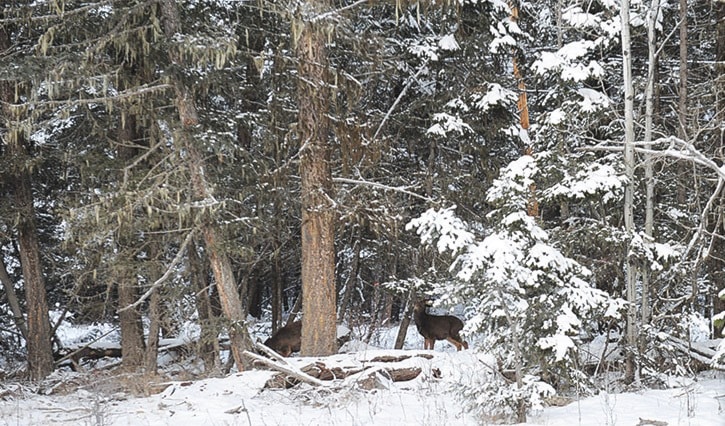Residents of the Williams Lake area will see helicopters in the air this week as the Ministry of Forests, Lands and Natural Resource Operations implements its treatment plan to minimize the spread of Douglas-fir bark beetles on Crown land through selective heli-logging.
Populations of Douglas-fir beetles are currently higher than normal in parts of the Cariboo Region. As part of the Williams Lake Beetle Management Unit 2016 Treatment Plan, helicopter harvesting will be used on steep slopes in the Williams Lake area to remove trees infested with the beetles and prevent damage to healthy trees nearby.
Flying could begin later this week, near the Williams Lake Stockyards and above Mile 168 Road (near Commodore Heights). When the work there is completed, helicopter operations will move to the Hodgson Road, Esler and South Lakeside areas and wrap up by Feb. 15, 2017.
Residents will hear the helicopters at work, but the aircraft will only be flying during daylight hours and will not be in the air on upcoming statutory holidays. No flights will occur over residential buildings.
Livestock and pet owners are advised to take precautions to protect their animals from injuring themselves. Horses in particular can be sensitive to helicopter noise and may run if startled.
For safety reasons, members of the public should stay away from active harvesting areas. They are also reminded that unmanned aerial vehicles (drones) must not be operated anywhere near these areas, since doing so can endanger the safety of pilots and workers on the ground.
In addition to the direct harvesting of infested trees, the Douglas-fir bark beetle treatment plan for the Williams Lake area includes the following activities:
The anti-aggregative pheromone methyl cyclo hexenone (MCH) will be used to prevent or disrupt Douglas-fir beetle attacks on very small infestation sites.
“Trap trees” will be established by falling large, healthy Douglas-fir trees in accessible areas. These trees attract beetles in the spring. Once adult beetles and larvae are established within a trap tree, the tree is taken to a mill where the beetles and larvae are destroyed in the milling process.
Where appropriate and if no other practical options are available, some infested trees may be cut down and burned on site to destroy the beetles in the bark.
Funnel traps will also be deployed around mill yards and log storage areas to capture adult beetles.
The ministry is committed to controlling the spread of Douglas-fir beetles in the Cariboo-Chilcotin Natural Regional District and limiting their impacts on the mid-term timber supply, wildlife habitat, recreational opportunities and wildfire management.
The Williams Lake Timber Supply Area contains 3.24 million hectares of forest, with 1.83 million hectares considered to be available for timber harvesting.
Douglas-fir beetle infestations tend to be cyclical and the last major outbreak in the Cariboo-Chilcotin Natural Regional District peaked in 2008, covering about 68,550 hectares. The volume of timber killed by the Douglas-fir beetle in the Williams Lake Timber Supply Area that year was about 172,534 cubic metres.
According to the ministry’s latest mapping data (based on aerial surveys conducted in the summer of 2016), the beetles killed 81,223 cubic metres of timber in the Cariboo-Chilcotin Natural Regional District in 2015.
Read more about Douglas-fir beetle management or download a guide to managing Douglas-fir beetles on private property at: http://www2.gov.bc.ca/gov/content/industry/forestry/managing-our-forest-resources/forest-health/forest-pests/bark-beetles/douglas-fir-beetle/management.
